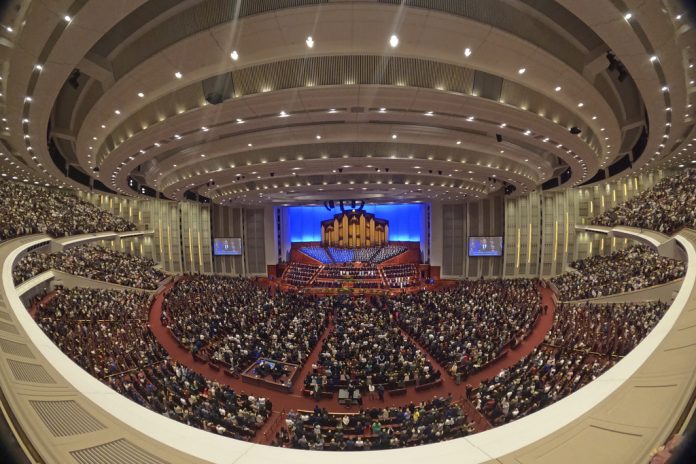The Church of Jesus Christ of Latter-day Saints has disheartened LGBTQ+ activists after issuing a slew of new policies this week that would significantly restrict the role of its transgender members.
The guidelines were released Monday as part of updates to the General Handbook of the denomination known widely as the Mormon church. Its new rules, in addition to expanding on an existing rule that prevents transgender people from being baptized, also prohibit transgender people from working with children or serving as priests or teachers.
The church’s handbook states that those “who transition away from their biological sex at birth are welcome to attend sacrament meetings” and participate in “many other ways”. It also encourages these individuals and their families to confer with local leaders regarding their church participation. The new guidelines, however, significantly limit such participation.
The policy now states that members who have transitioned in any way — whether that transition is social, medical or surgical — cannot stay at youth camps overnight and may only use single-occupancy restrooms at church meetinghouses. Alternatively, a “trusted person” must be stationed outside the restroom to keep others from entering when a transgender person uses a restroom that aligns with their personal gender identity.
The latest edition of the General Handbook while defining and reaffirming gender as one’s biological sex at birth, also states that the faith does not “take a position on the causes of” gender dysphoria.
Previously, the interpretation of the church’s policies on this matter were left open to local congregations, their bishops and lay leaders. These new guidelines clarify most of those gray areas.
A spokesperson for the denomination declined comment Friday.
LGBTQ+ advocates within the faith say these stringent guidelines further marginalize transgender people who already feel like outsiders in church. Laurie Lee Hall, a transgender woman who was excommunicated in 2017 after she transitioned, said the new guidelines make it challenging for people like her to keep the faith.
“The door seems shut and bolted,” she said Friday.
Hall, who lives near Louisville, Kentucky, said she has been participating in a local Mormon church that has been welcoming and inclusive by even allowing her to participate in classes and activities with women.
“While I’ve had some separation from the church in terms of my membership and beliefs, I’ve enjoyed at least a social connection with the women at church,” Hall said. “Now, none of that is going to be possible.”
The new guidelines would require her to attend classes with men.
“I’d attend church in dress, shoes and makeup and be required to site with a bunch of men wearing suits,” Hall said. “It would put a target on me as someone who is severely off-script.”
What offends Hall more than that is the church’s policy that transgender people won’t be allowed to work with children or youth, or that they need chaperones to use a bathroom of their choice.
“It implies that a trans member is somehow a danger to others,” she said. “It’s dehumanizing and far too toxic to handle for members who are still in the process of reconciling their gender identity with their faith.”
The new guidelines surfaced even as the denomination, over the past decade-plus, has tried to stake out a more compassionate approach on LGBTQ+ issues while reaffirming its doctrinal opposition to intimacy between people in same-sex relationships. The one detour from that path was in 2015 when the church issued rules that banned baptisms for children of gay parents and that labeled same-sex couples as sinners eligible for expulsion. Those were repealed in 2019.
Matthew Bowman, who is the Howard W. Hunter Chair of Mormon Studies at Claremont Graduate University in Claremont, California, said the new transgender guidelines are “unsurprising” and have been a long time coming.
“This has been a real struggle for members for a long time since the 1970s and 1980s when the church took a conservative stance on homosexuality,” he said. “Those members are accustomed to the church being unwilling to accommodate and being reluctant to adapt. But, having it spelled out like this is painful.”
Hall says she still hopes the church will change direction as it did when it rescinded a ban on ordination of African Americans. She also worries that if this trajectory of exclusion continues, more people could leave the faith.
“It’s going to be a while before a legitimate social policy change occurs in the church,” she said. “If that continues, there is going to be generational loss because young people are not going to accept these draconian policies. All of this is completely avoidable if only the church can simply say we love you and we’ll find ways to include you.”
___
Associated Press religion coverage receives support through the AP’s collaboration with The Conversation US, with funding from Lilly Endowment Inc. The AP is solely responsible for this content.
Source: post





